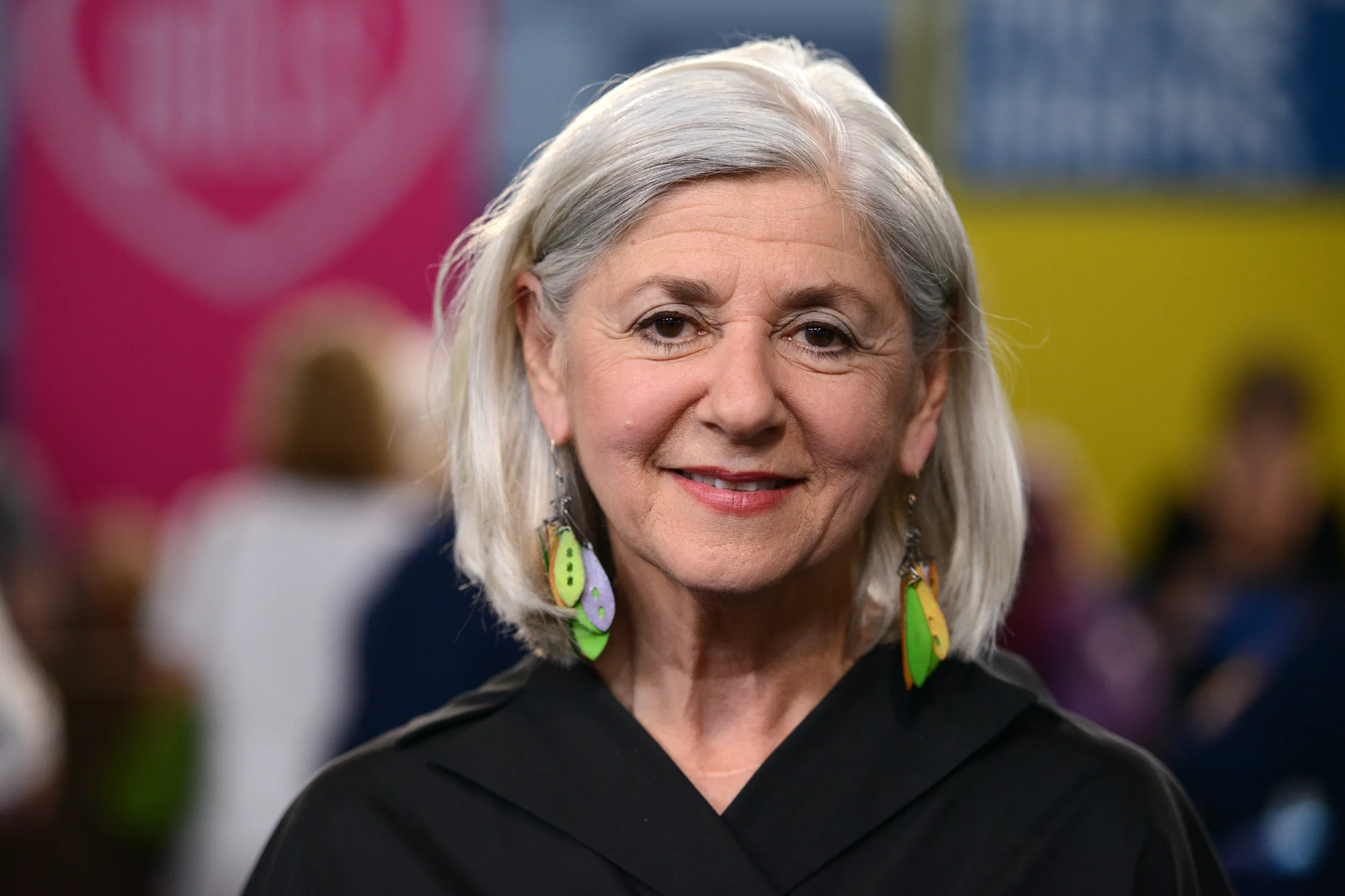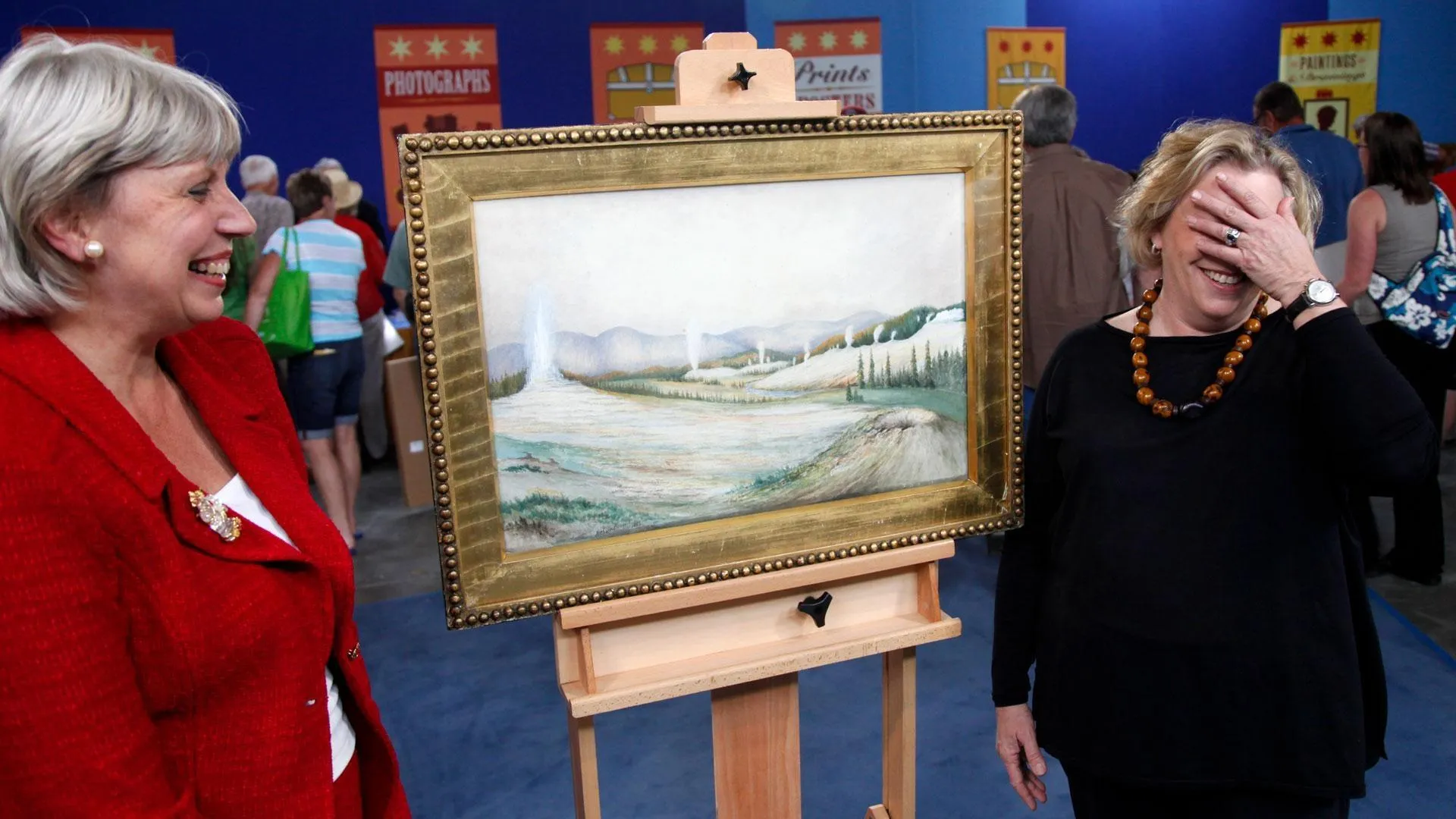APPRAISER: So Deborah, you came to the Roadshow today and it's your birthday. How exciting you got on.
GUEST: I know.
APPRAISER: And you brought such great things. Can you tell us how you got them?
GUEST: They were my maternal grandmother's. And my grandfather worked on Wall Street in the 1950s and early 1960s. And occasionally he would, on his lunch break, go down to Fifth Avenue or Park Avenue and go window shopping and get my grandmother a lovely gift.
APPRAISER: Well, they're all from different periods. Do you know anything about them?
GUEST: I know that that is very old, and I would imagine that my grandfather got that at an estate sale. The others I know nothing about.
APPRAISER: Well, you're right. This is actually the oldest of the pieces. It's Art Deco, it's from the '20s, probably American made. And these are all old European cut diamonds. It's a bow form, which was very classic and very wearable, and that form translated over the years. People adore bows. Now, this ring, this is an emerald. And again, I think it's American made. Do you know anything about it?
GUEST: Only that my grandmother wore it every day when she was dishwashing and cleaning her kitchen. And I know that emeralds are soft, and I'm amazed that it survived.
APPRAISER: Well, you know, it's very interesting, what's unusual about this emerald is that it is a clean emerald. Because usually emeralds have many inclusions. And I don't think it's clean because your grandmother washed it. I think that it's clean because it probably comes from a mine in South America that produces a cleaner stone, like the Chivor mine from Colombia. And it's not a great big size. It's probably around two, two and a half carats. But I love the cutting of it, and I love the cleanliness of it. It's surrounded by diamonds, as you know. And I would date it from the late '30s, early '40s. I see. Now, the next ring, what do you know about that?
GUEST: When I was a little girl, my grandmother would take me to Montclair, New Jersey, to Hahne's Department Store. It was a special trip. And then we'd go to lunch. And she would always wear that ring. And I loved that ring.
APPRAISER: You liked that ring. Well, I'm going to tell you about the diamond. It is a diamond. It's about three carats, and it's a very unusual long shape. It's very pointed. And these shapes come in and out of fashion. It was very popular in the '30s and '40s and in the '50s.
GUEST: I see.
APPRAISER: Now, what I like about it is I like the way they sort of juxtapose those long, long, tapered baguettes. They're unusually long. And they're quite expensive. If you lost one, it would cost a lot of money to cut one that long. Of course, the diamond is mined probably in South Africa, but was probably made here, in New York, is what I would say.
GUEST: And there's no maker's names on them?
APPRAISER: There's no mark. What's interesting about this diamond is it has a brownish, pinkish tone.
GUEST: Really?
APPRAISER: It's very unusual, and it's a very clean stone internally. So I'm going to give you the value of the bow brooch first. At wholesale or auction price, we would range it between $3,000 to $4,000.
GUEST: All right.
APPRAISER: The emerald in the same range, between $3,000 to $4,000.
GUEST: Okay.
APPRAISER: But of course the diamond, I'm going to say $8,000 to $12,000.
GUEST: Okay.
APPRAISER: So I think your grandfather did some good shopping.
GUEST: I think he did, too.
APPRAISER: My grandmother would be thrilled if she knew.
GUEST: Thank you.
APPRAISER: Thanks for coming to the show.
GUEST: Thank you so much.
APPRAISER: You're welcome.











